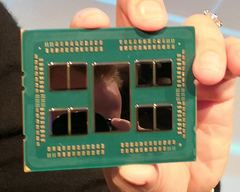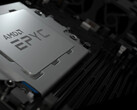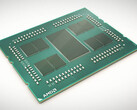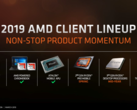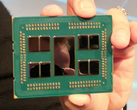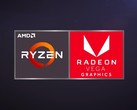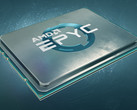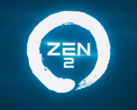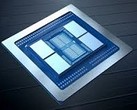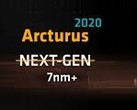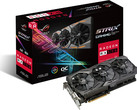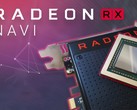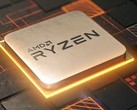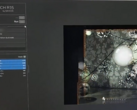Yesterday, AMD held its datacenter oriented Next Horizon event, in which key AMD executives such as CEO Lisa Su, CTO Mark Papermaster, and RTG SVP David Wang talked about key products and technologies such as the Rome based Epyc 2 CPUs, Radeon Instinct MI60, and the 7nm process from TSMC. The key points of the presentation are below, but you can watch the full show via AMD's YouTube video.
Zen 2: Chiplets and 7nm
Previously, a PC hardware analyst had predicted that AMD would attempt to move all IO functions of the CPU to a larger 14nm die (since IO usually benefits little from newer processes) and connect it to the 7nm CPU core die with Zen 2; he referred to this method of partitioning the CPU as "chiplets." That is now fact as AMD has confirmed Zen 2 will be using chiplet technology in order to increase yields on the actual CPU cores and increase scalability. One die of 8 Zen 2 cores (without any IO) is less than half the size of one full Summit Ridge die, the original Zen die. AMD says the 7nm process will allow AMD to achieve either 25% more performance or 50% less power usage, however AMD did not state which nod they were comparing against; AMD could be comparing to either GlobalFoundries's 12nm or 14nm nodes (used on Zen+ and Zen respectively) or TSMC's previous 16nm node. AMD also claimed TSMC's 7nm was actually better than Intel's yet unreleased 10nm node, which is certainly a confident boast seeing as neither company has 7nm or 10nm products on the market yet.
Epyc: Rome is 8 dies with 64 cores, and AMD partners with Amazon
The aforementioned analyst as well as other journalists such as Charlie Demerjian of SemiAccurate also predicted Rome would have a total of 9 dies, one for IO based on 14nm and 8 for CPU cores based on 7nm. AMD has now confirmed this as well. The company also presented a performance demo for Rome, showing it just edging out two of Intel's Platinum Xeons. It should be noted that AMD's testing methodology is not clear, so don't simply take AMD's word for it. AMD SVP Forrest Norrod said
You'll see that one [Rome CPU] versus two [Platinum Xeons]... it's not a fair fight I'm afraid to say.
AMD also announced that Epyc servers would be available on Amazon's AWS service. AMD previously promised to attain double digit market share in the datacenter by the end of 2018, and this partnership may be one of the reasons why.
Radeon: 7nm Vega and Instinct
Finally, AMD also discussed its Radeon datacenter products and unveiled the Radeon Instinct MI60. As the world's first 7nm GPU, it features 32 GB of HBM2 memory and 64 CUs. AMD promises to bring more support for different data types and better power efficiency with 7nm Vega, as well as a much larger memory buffer and a much faster memory bandwidth of 1 TB a second. Perhaps more importantly, the MI60 GPU also supports PCIe 4.0 and allows for direct communication between GPUs via the Infinity Fabric connectors on the side of the GPUs, similar to Nvidia's NVLink and previous multi GPU technologies such as CrossFire and SLI. The MI60 will be launching later this year and its lower tiered counterpart the MI50 will arrive in Q1 of 2019.




